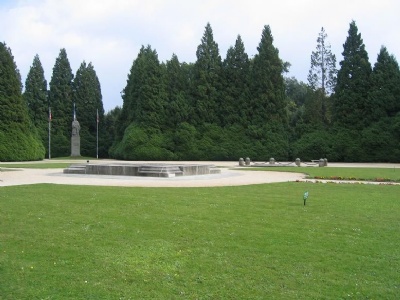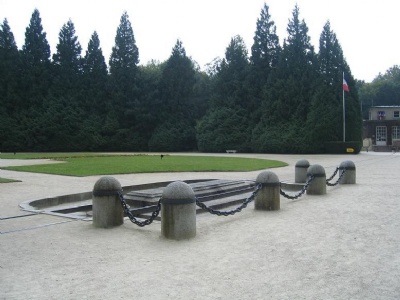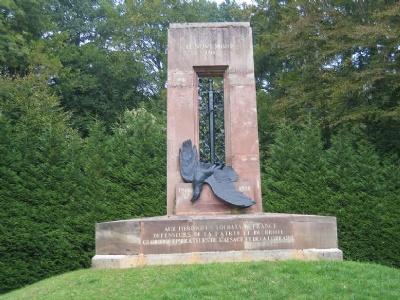Compiégne
From a war-historical point of view, Compiegne is known for two events. First it was in the forest of Glades east of Compiegne that Germany was forced to sign the surrender on November 18, 1918. And Secondly, it was at the same site France was forced to sign its surrender to the Germans on June 22, 1940. For Germany, the signing of the capitulation in 1918 was a national disaster. The capitulation gave rise to the myth that the german (imperial) army had been stabbed in the back by antinationalists and Jews within their own country. Majority of the german people felt anger and disappoinment how the war had ended, not only Hitler and the Nazis saw it as a disgrace. A disgrace that must be erased in order to give Germany back its honour. When Hitler came to power, one of his main goals was to erase the shame of the Treaty of Versailles. At the surrender in 1918, the German delegation had been received by the french delegation in Marshal Ferdinand Foch railway wagon. there they had to sign the capitulation. This wagon was later exhibited in a museum in Paris but was moved back to Glades forest in 1927 and placed in a museum building next to the historic site where the surrender took place. The whole area became a national monument with several monuments celebrating France’s victory over Germany.
When France asked for capitulation, Hitler wanted to humiliate the French in the same way he felt the Germans had been humiliated by the French back in 1918. He therefore had the same railway wagon moved from the museum in Paris and placed it in the exact same place in Glades where it stood when the Germans signed the capitulation. Hitler himself received the French delegation at the same place in the wagon where Marshal Ferdinand Foch had been sitting in when he received the German delegation. In this way Hitler considered that he had erased Germany’s shame. Hitler did not take part in the negotiations, but only sat quietly deep in his thoughts. He also destroyed the monuments on the site that celebrated France’s victory with one exception, Marshal Foch’s statue. It was not out of respect for Foch that Hitler left the statue undemolished. Hitler thought that the old marshal could stand and look out over a devastated that had been erased out of history.
The French capitulation was Hitler’s absolute greatest political success as the eradication of the Versailles treaty had been something he sought since he was an insignificant agitator in Munich’s beer halls in the early twenties. His popularity was also at its greatest at this time and then fell down towards the final fate in the bunker five years later. Ferdinand Foch’s railway wagon was transported to Berlin and exhibited in Lustgarten next to Berlin’s cathedral where it became a museum object. In the autumn of 1944 when the Germans retreated on all fronts, the wagon was moved to Thüringia where it was hidden. In march 1945, the wagon may have been destroyed in a bombing, but more likely it was destroyed by the germans themselves. The latter to prevent the Germans from once again being forced to capitulate in the same wagon.
Current status: Partly preserved/demolished with museum (2010).
Location: 49°25'39.46"N 02°54'22.55"E
Get there: Car.
Follow up in books: Kershaw, Ian: Hitler – A Biography (2008).




After the war, the memorial was recreated in the forest of Glades and after the reunification of Germany, parts of Ferdinand Foch’s railway wagon were found. These were handed over to France and are now in a museum in Glades forest next to an exact copy of the original wagon. The place where the railway carriage stood is marked by a symbolic railroad track and all the monuments destroyed by the Germans have been rebuilt.